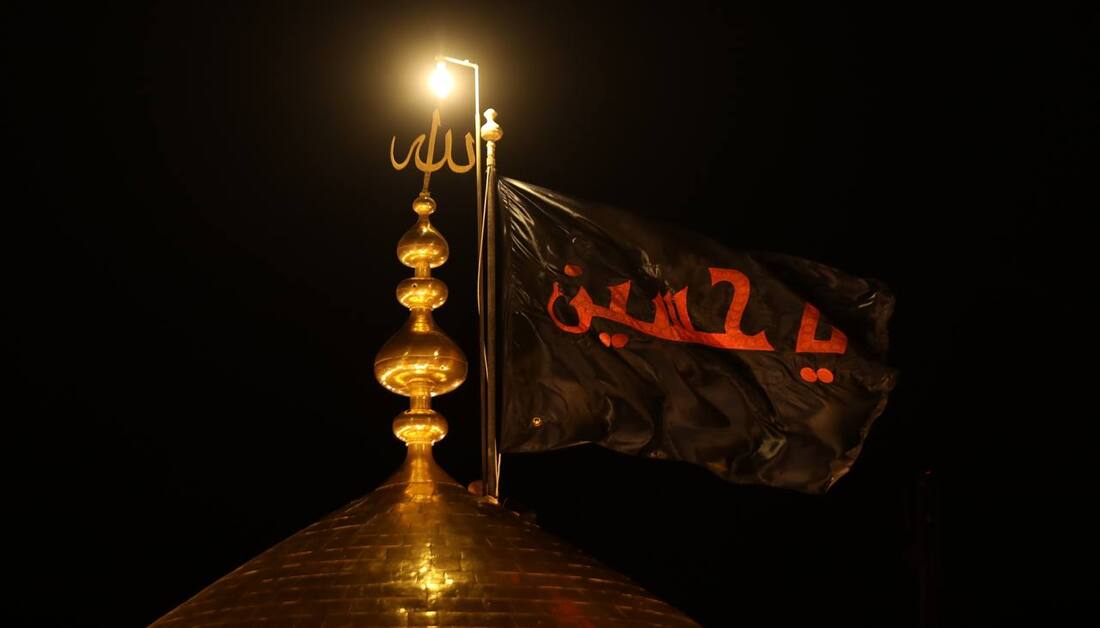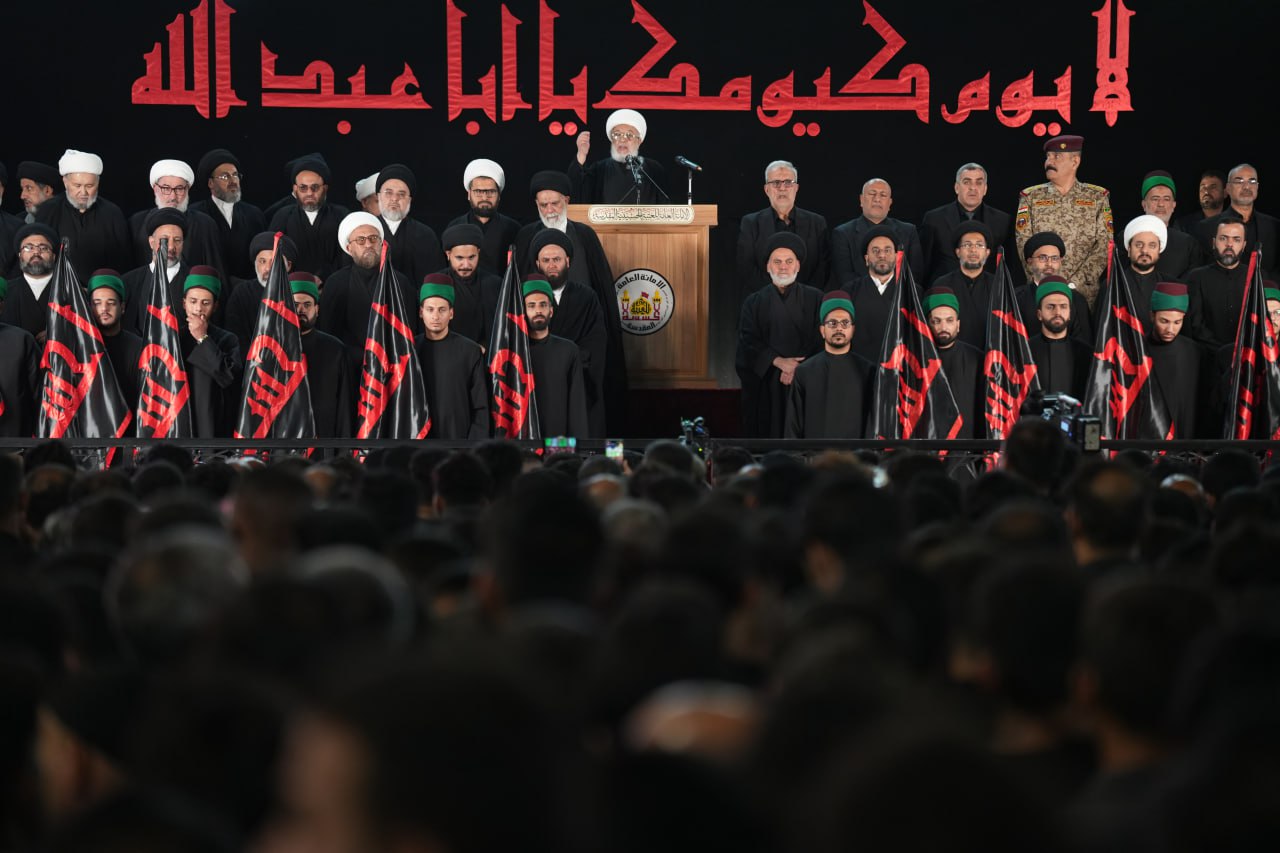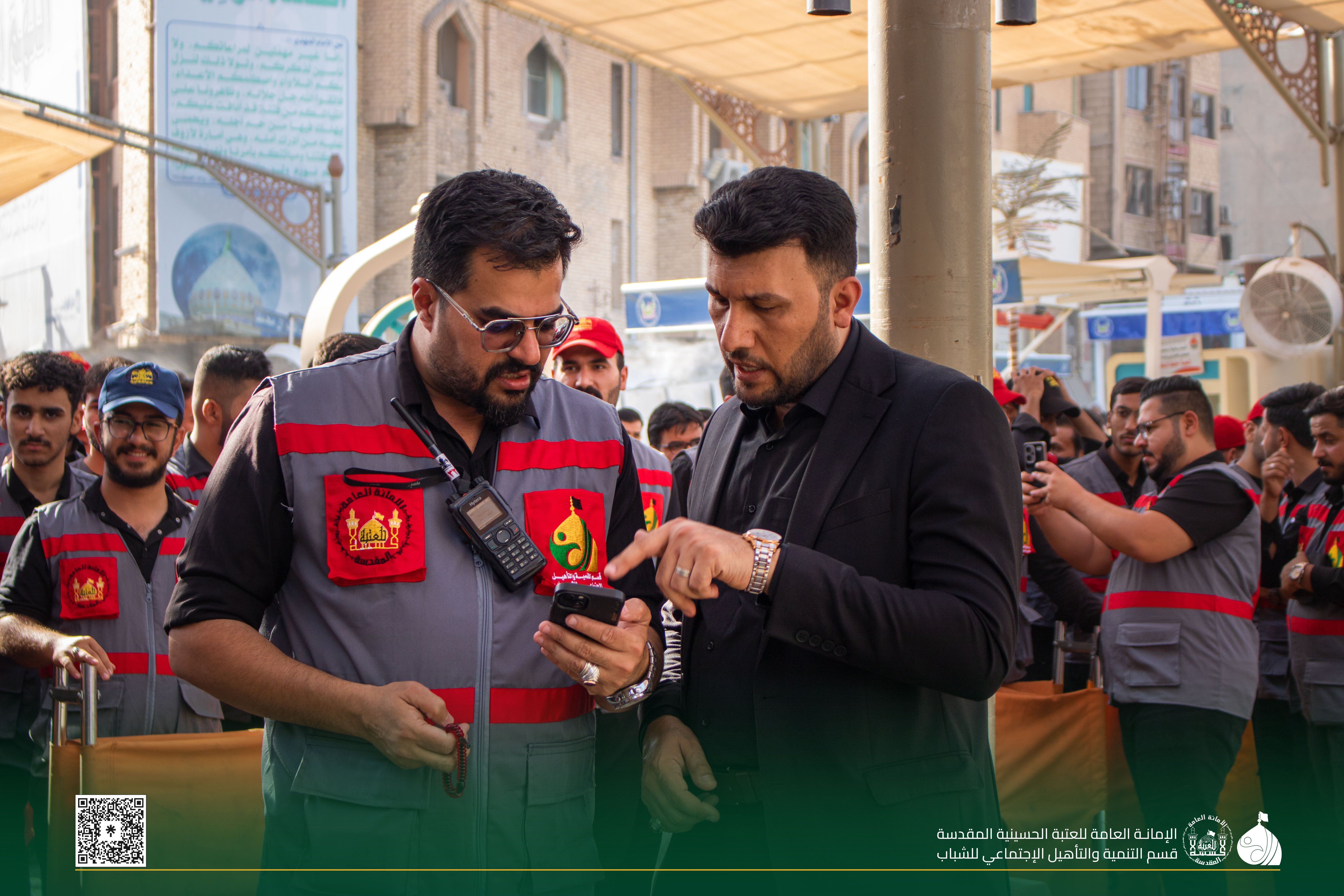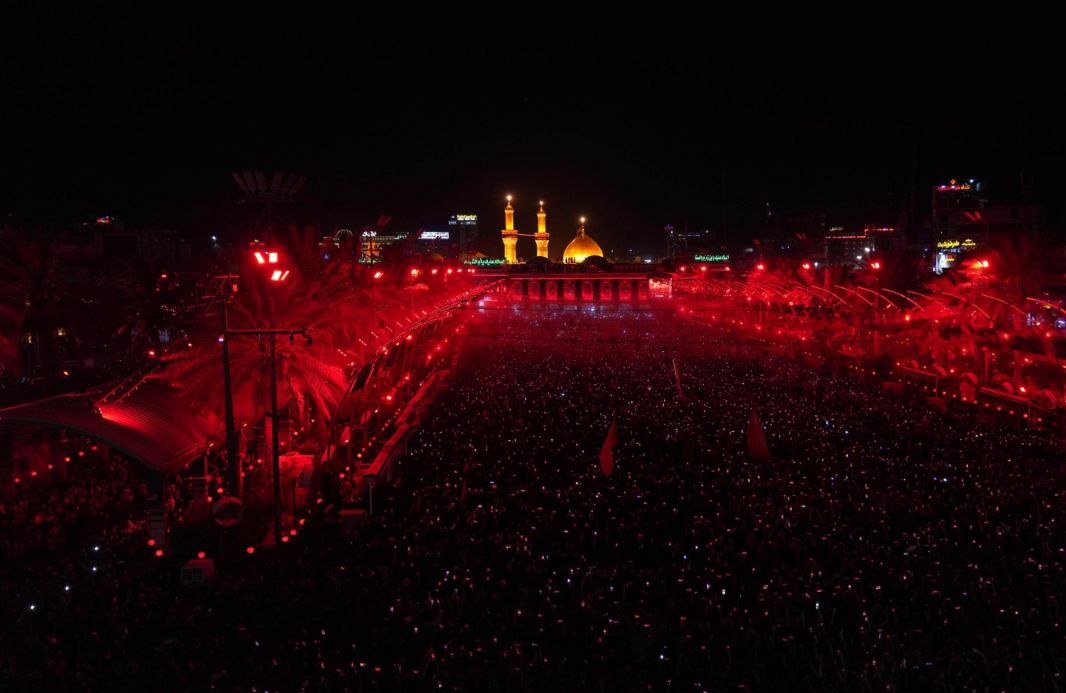The black banner rises again, and Karbala opens the gates of grief
On the final night of Dhul-Hijjah, as the sun slowly faded behind the old city walls of Karbala, Umm Hassan— a longtime resident of the Al-Abbas Quarter—stood at her door, carefully hanging a small black banner. She had done this for twenty consecutive years. This time, she paused longer than usual, silently gazing at the fabric as though bracing herself to relive a sorrow she already knew too well.
“Tonight they’ll raise the black banner,” she said to her neighbor, who was watering plants before sunset. The neighbor replied with a heavy sigh, “By God, we no longer know which year hurts more. Every year, the wound grows deeper.”
At the Qibla Gate of Imam Hussain (peace be upon him), pilgrims had been arriving since the afternoon. Some had traveled from Iraq’s far south, others from Baghdad, Diyala, and Kirkuk. Among them were visitors who did not speak Arabic, yet all understood the solemn meaning behind the banner soon to be changed atop the sacred dome.
A young boy, holding his phone out to record the moment, whispered into the camera, “I want to send this to my uncle, who was martyred in Mosul. He used to come every year to witness the banner being raised.”
In Karbala, grief has its own rituals.
It’s as if the city itself understands that nothing remains the same after this night. The colors shift. Walls are draped in black, decorations vanish from windows, and mourning processions begin weaving through the alleys one by one.
Shops close early. Children put away their toys. Streets are swept clean, as though preparing not just for a ceremony, but for sorrow itself to pass through.
On Sidra Street and in the stalls lining Sahib Al-Zaman Street, where musk and roses once perfumed the air, shopkeepers replace their colorful displays with black cloths and banners reading, "Hayhat Minna Al-Dhilla” (Humiliation is far from us) and "Ya Hussain."
When the banner changes, the entire atmosphere transforms.
During the evening prayers, thousands of eyes turned toward the golden dome. In reverent silence, the red banner was lowered, and the black one rose into the Karbala sky. No announcement was needed. The hearts of those watching did all the speaking, and tears flowed freely in the hush.
Sheikh Abdul-Mahdi Al-Karbalaey, representative of the Supreme Religious Authority, addressed the crowd during the ceremony:
“Hussaini rituals are, at their core, acts of worship through which we draw nearer to God by offering condolences to the Prophet and his family (peace be upon them) for the tragedy of Karbala. These rituals must remain rooted in divine purpose, preserving their sacred essence as a path toward God.”
A woman standing at the edge of the gathering pressed her hand to her chest and whispered, “I’ve come to renew my pledge again.” Then she disappeared into the crowd.
Nearby, a young man in a black shirt embroidered with green threads dropped to his knees as the banner was raised. He lifted his hands toward the dome and wept. No one disturbed him—everyone grieved in their own way.
Throughout Karbala, candles were lit, banners were raised, gatherings convened. Schools, shops, homes, even mobile phone stores, draped themselves in black.
Karbala: Where grief becomes a daily language
In Karbala, no announcement is needed to mourn. Muharram is not simply a date on a calendar; it is a feeling rekindled each year. Women begin cooking meals to serve the mourners. Men erect mourning tents. Children rehearse poems in preparation for the day of Ashura.
And above it all, the black banner waves atop the dome, like a voice calling out to every heart:
"Welcome to the place of unforgettable grief. Here is Hussain."




